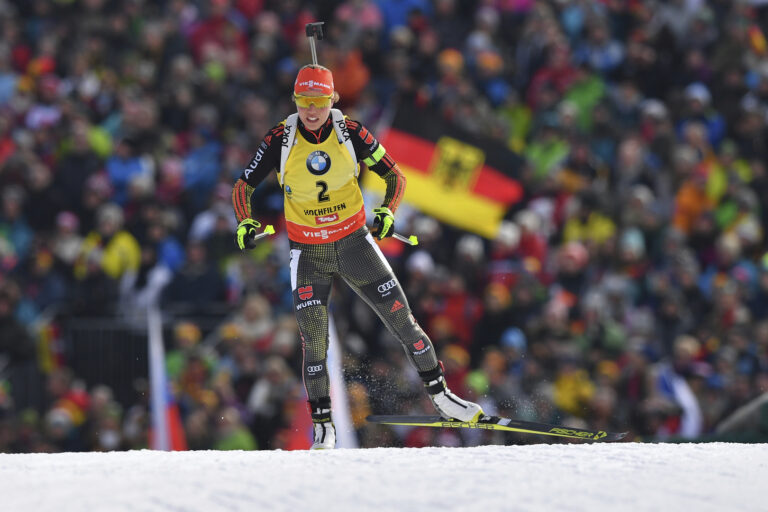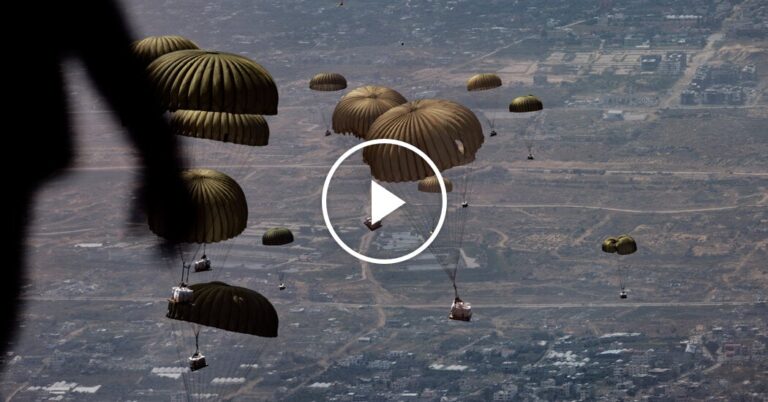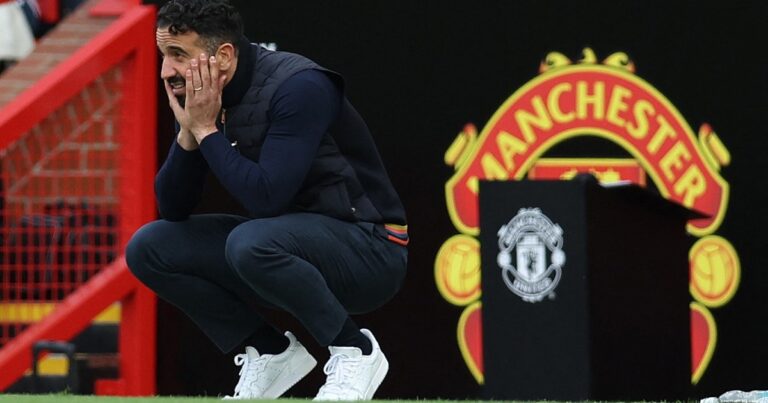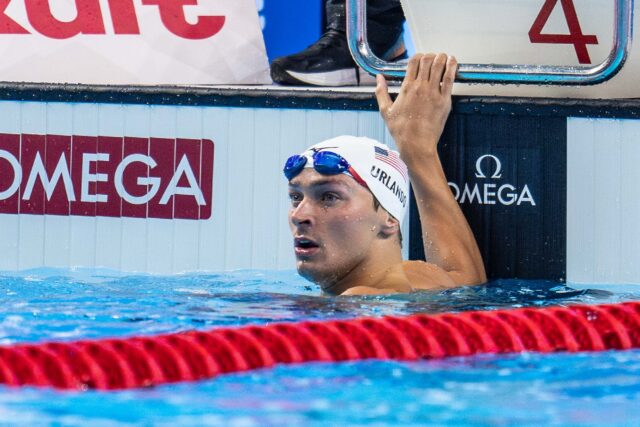By James Sutherland on SwimSwam

2025 World Championships
Event Schedule:
- Men’s 800 freestyle final
- Women’s 200 freestyle final
- Men’s 100 freestyle semi-finals
- Women’s 50 backstroke semi-finals
- Men’s 200 butterfly final
- Men’s 50 breaststroke final
- Women’s 200 butterfly semi-finals
- Men’s 200 IM semi-finals
- Mixed 4×100 medley relay final
The fourth night of finals from the 2025 World Championships promises to be another exciting one with an action-packed session of racing on the docket, including four individual finals and the first relay since the opening day of competition.
Things will kick off with the men’s 800 freestyle, which features reigning Olympic and defending world champion Daniel Wiffen and 2023 world champion Bobby Finke, though it’s Tunisia’s Ahmed Jaouadi and Germany’s Sven Schwarz holding the top seeds coming out of the prelims.
Jaouadi, the bronze medalist in this event at the 2024 Short Course Worlds, set a new personal best of 7:41.58 to lead the heats on Monday morning.
Lukas Märtens, who won gold in the 400 free on Day 1, will be lurking out in Lane 7 after clocking 7:45.54 in the prelims, while Wiffen will be in Lane 1 after he went 7:46.36. The Irishman has said he feels “really weak” and is working to figure out how to improve his form leading into the final. He recently dealt with appendicitis.
Sam Short, who was the #2 qualifier out of the prelims and won silver at the 2023 World Championships, was a shocking late withdrawal after suffering food poisoning. Aussie Benjamin Goedemans was moved into the final in his place.
We’ll also see finals in the women’s 200 free, where Mollie O’Callaghan is the frontrunner, but American Claire Weinstein looks sharp, the men’s 200 fly, which American Luca Urlando headlines after he went sub-1:53 in both the prelims and semis, the men’s 50 breast, which is wide open but led by 100 breast winner Qin Haiyang, and the mixed 4×100 medley relay.
This morning, the U.S. team was a shocking 10th in the mixed medley prelims, knocking them out of the final, with Italy (3:42.19), the Netherlands (3:42.56) and China (3:42.81) holding the top three seeds.
Tonight’s session will also include Summer McIntosh back in the water in the semis of the women’s 200 fly, and Leon Marchand competing for the first time in the evening in the semis of the men’s 200 IM.
Men’s 800 Freestyle — FINAL
- Ahmed Jaouadi (TUN), 7:36.88
- Sven Schwarz (GER), 7:39.96
- Lukas Märtens (GER), 7:40.19
- Bobby Finke (USA), 7:46.42
- Victor Johansson (SWE), 7:47.00
- Kuzey Tuncelli (TUR), 7:49.09
- Benjamin Goedemans (AUS), 7:50.72
- Daniel Wiffen (IRL), 7:58.56
Ahmed Jaouadi made his move shortly after the halfway mark of the men’s 800 freestyle and ran away with the gold medal, putting up a time of 7:36.88 to shatter his lifetime best and move up to #3 all-time.
The 20-year-old, who placed 4th in this event at last summer’s Olympics, incredibly negative-split the event, turning in 3:48.92 at the 400 before closing in 3:47.96, with his time standing up as the fastest ever produced in a textile suit.
Jaouadi’s previous best time stood at 7:41.58, set in the prelims, while coming into the meet, his PB stood at 7:42.07.
He overtakes fellow Tunisian Ahmed Hafnaoui, the 2023 world champion who previously held the textile world record at 7:37.00, while Jaouadi still trails Tunisian legend Oussama Mellouli, who ranks #2 all-time with the African Record of 7:35.27 from 2009.
Tunisia now has the 2nd, 3rd and 4th-fastest performers ever in the event.
All-Time Performers, Men’s 800 Freestyle (LCM)
- Zhang Lin (GER), 7:32.12 – 2009
- Oussama Mellouli (TUN), 7:35.27 – 2009
- Ahmed Jaouadi (TUN), 7:36.88 – 2025
- Ahmed Hafnaoui (TUN), 7:37.00 – 2023
- Sam Short (AUS), 7:37.76 – 2023
The battle for silver came down to German teammates Sven Schwarz and Lukas Märtens after American Bobby Finke started to fall off the pace late in the race. Schwarz had enough in the tank to get his hand on the wall for silver, clocking 7:39.96, while Märtens claimed bronze in 7:40.19 after winning the 400 free on Sunday. Both swimmers hold slightly faster best times, with Schwarz having been 7:38.12 and Märtens 7:39.10, both done earlier this year.
Finke fell off the pace with about 250 meters to go and did just enough to hang on for 5th in 7:46.42, with Victor Johansson placing 6th in 7:47.00 after setting a Swedish Record in the prelims (7:44.81).
WOMEN’S 200 FREESTYLE – FINAL
- World Record: 1:52.23 – Ariarne Titmus (AUS), 2024
- World Junior Record: 1:53.65 – Summer McIntosh (CAN), 2023
- Championship Record: Mollie O’Callaghan (AUS) – 1:52.85
- 2023 World Champion: Mollie O’Callaghan (AUS) – 1:52.85
- 2024 Olympic Champion: Mollie O’Callaghan (AUS) – 1:53.27
- Mollie O’Callaghan (AUS), 1:53.48
- Li Bingjie (CHN), 1:54.52
- Claire Weinstein (USA), 1:54.67
- Freya Colbert (GBR), 1:55.06
- Barbora Seemanova (CZE), 1:55.20
- Erika Fairweather (NZL), 1:55.61
- Jamie Perkins (AUS), 1:56.55
- Erin Gemmell (USA), 2:00.16
Mollie O’Callaghan delivered under pressure yet again in the final of the women’s 200 freestyle, overcoming a crowded field to roar home on the last 50 and win gold in the event for the second time.
The 21-year-old Aussie has been open about the difficulties she’s had this year coming back from a knee injury, but when the chips were down, she proved she’s still the best in the world. After jockeying with American Claire Weinstein early in the race, O’Callaghan began to distance herself from the field on the third 50, and then, holding a lead of two-tenths at the 150, she blasted off the wall and rocketed home with a 28.41 split to touch first in a time of 1:53.48.
The time marks the fourth-fastest of her career and the ninth-fastest all-time, with O’Callaghan’s lifetime best sitting at 1:52.48 from the 2024 Aussie Olympic Trials.
In an exciting race for silver, China’s Li Bingjie made a big move on the back half, turning 7th at the halfway mark in 56.69 before storming home with splits of 28.99/28.84 to overtake Weinstein and snag the silver medal in 1:54.52, crushing her personal best by exactly one second. Li moves into 12th all-time in the event and is within three-tenths of the Chinese Record (1:54.26) held by Tang Muhan.
Weinstein had a strong performance to win bronze in 1:54.67, knocking two one-hundredths off the lifetime best she set in the semis.
Freya Colbert had a phenomenal swim to place 4th in 1:55.06, breaking the super-suited British Record of 1:55.54 set by Joanne Jackson at the 2009 World Championships. Colbert’s previous best time stood at 1:55.76.
MEN’S 100 FREESTYLE – SEMI-FINALS
- Jack Alexy (USA), 46.81 AR
- David Popovici (ROU), 46.84
- Egor Kornev (RUS), 47.29
- Kyle Chalmers (AUS), 47.36
- Maxime Grousset (FRA), 47.39
- Matt Richards (GBR), 47.59
- Patrick Sammon (USA), 47.62
- Gui Caribe (HUN), 47.64
In a stunning turn of events, after a fairly business-as-usual type opening semi of the 100 free, things went haywire in the second heat.
Seven of the eight fastest times from the semi-finals came out of the second heat, meaning that Kyle Chalmers‘ 47.36 was the only swim from the opening semi good enough to advance to the final, shockingly bumping out world record holder and reigning Olympic and world champion Pan Zhanle.
Jack Alexy left nothing to chance in the second semi, going toe-to-toe with David Popovici as both men threw down sub-47 performances, with Alexy clocking 46.81 to break Caeleb Dressel‘s American Record of 46.96 set in 2019 while narrowly missing Pan’s Championship Record of 46.80 set last year.
Alexy moves into #3 all-time in the event, only trailing Pan and Popovici, after he previously ranked 6th all-time with his old PB of 46.99 set last month at U.S. Nationals.
- Alexy: 22.45/24.36
- Popovici: 22.57/24.27
Popovici had the fastest back half in the field (24.27) to close like a freight train and nearly run down Alexy, clocking 46.84 to come within 13 one-hundredths of his European Record of 46.71 set four weeks ago. The swim marks Popovici’s fifth under 47 seconds.
All-Time Performers, Men’s 100 Freestyle (LCM)
- Pan Zhanle (CHN), 46.40 – 2024
- David Popovici (ROU), 46.71 – 2025
- Jack Alexy (USA), 46.81 – 2025
- Cesar Cielo (BRA), 46.91 – 2009
- Alain Bernard (FRA), 46.94 – 2009
Russia’s Egor Kornev set a personal best time of 47.29 to qualify 3rd overall into the final, while Maxime Grousset, Matt Richards, Patrick Sammon and Gui Caribe all threw down 47-mids from the second semi to crack the final and knock out Pan, who ended up 10th in 47.81 after he was 3rd in the first heat behind Chalmers and Hungarian Nandor Nemeth (47.72).
Placing 14th, 17-year-old youngster Luca Hoek le Guenedal clocked 48.04 to shatter his Spanish Record of 48.25 set earlier this month at the European Junior Championships.
WOMEN’S 50 BACKSTROKE – SEMI-FINALS
- World Record: 26.86, Kaylee McKeown (AUS) – 2023
- World Junior Record: 27.49, Minna Atherton (AUS) – 2016
- Championship Record: 27.06, Zhao Jing (CHN) – 2009
- 2023 World Champion: Kaylee McKeown (AUS), 27.08
Top 8 Qualifiers:
- Regan Smith (USA), 27.23
- Lauren Cox (GBR), 27.26
- Katharine Berkoff (USA), 27.34
- Wan Letian (CHN), 27.44
- Ingrid Wilm (CAN), 27.48
- Kylie Masse (CAN), 27.50
- Analia Pigree (FRA), 27.52
- Alina Gaifutdinova (NAB), 27.57
Regan Smith and Lauren Cox won their respective semi-finals to lead the women’s 50 back field into tomorrow’s final, with Smith registering the top time in 27.23.
Smith’s time is 13 one-hundredths shy of her lifetime best of 27.10, set at the 2023 World Championships, while Cox was 11 one-hundredths off her PB in 27.26 to advance in 2nd.
American Katharine Berkoff, the 2nd-fastest performer ever after clocking 26.97 at last month’s U.S. Nationals, moved through comfortably in 3rd, clocking 27.34, while China’s Wan Letian sits 4th in 27.44, narrowly miss her PB of 27.41.
MEN’S 200 BUTTERFLY – FINAL
- Luca Urlando (USA), 1:51.87
- Krzysztof Chmielewski (POL), 1:52.64
- Harrison Turner (AUS), 1:54.17
- Ilya Kharun (CAN), 1:54.34
- Carson Foster (USA), 1:54.62
- Alberto Razzetti (ITA), 1:54.85
- Chen Juner (CHN), 1:55.25
- Federico Burdisso (ITA), 1:55.27
Luca Urlando looked smooth and comfortable as he assumed control of the men’s 200 fly final on the second 50 and never looked back, soaring to his first World Championship title in a personal best time of 1:51.87.
Urlando split 25.01/28.34/28.52/30.00 en route to the victory, improving his previous best of 1:52.37 while mainting his place as the fourth-fastest performer in history. He now sits just 36 one-hundredths back of Michael Phelps‘ American Record of 1:51.51—but he is quicker than Phelps ever was in a textile suit (1:52.09).
Krzysztof Chmielewski re-lowered his Polish Record from the prelims in 1:52.64 to win the silver medal, matching his result from the 2023 Worlds in Fukuoka. The swim is good enough to move Chmielewski up into 6th all-time in the event, having entered the competition ranked 14th with a PB of 1:53.62. He went 1:52.89 in the heats to break a 14-year-old National Record.
Australian Harrison Turner used an aggressive middle 100 to hold on for the bronze medal in 1:54.17, a new National Record, as he becomes the country’s first-ever medalist in the event. Turner’s time lowered the previous Aussie Record of 1:54.46, set by Nick D’Arcy in 2009, and narrowly missed the Oceanian Record of 1:54.15 held by Kiwi Moss Burmester.
Turner, 21, set a best time of 1:54.90 at the Australian Trials last month, which marked a drop of more than two seconds from his previous best (1:57.07).
Ilya Kharun, who won Olympic bronze last summer and broke 1:53, made up a bit of ground on Turner on the last 50 but didn’t have enough to catch him, placing 4th in a time of 1:54.34.
MEN’S 50 BREASTSTROKE – FINAL
- Simone Cerasuolo (ITA), 26.54
- Kirill Prigoda (NAB), 26.62
- Qin Haiyang (CHN), 26.67
- Ivan Kozhakin (NAB), 26.73
- Melvin Imoudou (GER), 26.74
- Chris Smith (RSA), 26.75
- Koen de Groot (RSA), 26.81
- Luka Mladenovic (AUT), 26.89
It wasn’t a particularly fast final, but Simone Cerasuolo was the one who came away with the glory as he wins gold in the men’s 50 breaststroke.
The 22-year-old Italian used his high-tempo stroke to power to a time of 26.54, snagging the world title after he had finished 5th, 9th and 6th at the last three World Championships. Cerasuolo owns a best time of 26.42, set here in Singapore in the prelims.
This is Cerasuolo’s first medal at a LC World Championships, having won five medals at SC Worlds, including an individual bronze in the 50 breast in 2022.
Russian Kirill Prigoda, representing Neutral Athletes B, did enough to win silver from Lane 1, clocking 26.62 to edge out China’s Qin Haiyang (26.67), the top seed from the semis and 100 breast gold medalist who settled for bronze. This marks Prigoda’s second individual LC World Championship medal and his first since 2017. He also won silver in this event (and the 100 and 200 breast) at the 2024 Short Course Worlds.
Russia’s Ivan Kozhakin, who among swimmers in the final, had the fastest time this year coming into the meet at 26.46, ended up 4th in 26.73, with 4th through 8th only separated by 16 one-hundredths.
WOMEN’S 200 BUTTERFLY – SEMI-FINALS
- World Record: 2:01.81, Liu Zige (CHN) – 2009
- World Junior Record: 2:03.03, Summer McIntosh (CAN) – 2024
- Championship Record: 2:01.81, Liu Zige (CHN) – 2009
- 2023 World Champion: Summer McIntosh (CAN), 2:04.06
- 2024 Olympic Champion: Summer McIntosh (CAN), 2:03.03
Top 8 Qualifiers:
- Elizabeth Dekkers (AUS), 2:06.13
- Summer McIntosh (CAN), 2:06.22
- Regan Smith (USA), 2:06.96
- Ellen Walshe (IRL), 2:07.48
- Emily Richards (GBR), 2:07.71
- Caroline Bricker (USA), 2:07.86
- Helena Rosendahl Bach (DEN), 2:07.92
- Yu Zidi (CHN), 2:07.95
Elizabeth Dekkers had the fastest splits in the field on the second and third 50s as she claimed the top seed for tomorrow’s final of the women’s 200 fly.
Dekkers dominated the first semi in 2:06.13, marking her fastest swim of the year (previously 2:07.36) after she was a late addition to the Australian roster after a late withdrawal from Abbey Connor.
Dekkers ended up being one of just two swimmers who advanced to the final out of the first semi, as a similar scenario to the men’s 100 free occurred and only Dekkers and Caroline Bricker (2:07.86) managed to get through from the opening heat.
Summer McIntosh cruised through to comfortably take the second semi in 2:06.22, advancing 2nd into the final after dropping the fastest closing split in the field (32.64).
Shortly after leading the 50 back semis, Regan Smith did enough to easily qualify for the final in 2:06.96, good for 3rd overall, while Ellen Walshe broke her own Irish Record by nearly a full second to advance in 4th, touching in 2:07.48. Her previous mark stood at 2:08.42, set this past March.
Twelve-year-old phenom Yu Zidi qualified for her second final of these championships, putting up a time of 2:07.95 to sneak into the final in 8th. Yu has been as fast as 2:06.83 this year, done in May at the Chinese Nationals.
MEN’S 200 IM – SEMI-FINALS
World Record: 1:54.00, Ryan Lochte (USA) – 2011- World Junior Record: 1:56.99, Hubert Kos (HUN) – 2021
Championship Record: 1:54.00, Ryan Lochte (USA) – 2011- 2023 World Champion: Leon Marchand (FRA), 1:54.82
- 2024 Olympic Champion: Leon Marchand (FRA), 1:54.06
Top 8 Qualifiers:
- Leon Marchand (FRA), 1:52.69 WR
- Shaine Casas (USA), 1:55.13
- Duncan Scott (GBR), 1:55.51
- Tomoyuki Matsushita (JPN), 1:57.11
- Hubert Kos (HUN), 1:57.22
- Lewis Clareburt (NZL), 1:57.29
- Wang Shun (CHN), 1:57.48
- Carson Foster (USA), 1:57.49
It took until the fourth night of racing for us to see Leon Marchand racing in the evening in Singapore, but it was worth the wait.
The French superstar delivered a stunning performance in the semi-finals of the men’s 200 IM, putting up an otherworldly time of 1:52.69 to shatter the 14-year-old world record by well over a second.
Marchand’s time knocked 1.31 seconds off Ryan Lochte‘s world record of 1:54.00, set in 2011, and chopped 1.37 off his own European and French Records of 1:54.06, set en route to winning gold at last summer’s Olympics.
Marchand was previously one of just four swimmers who had ever broken the 1:55 barrier, joined by Lochte, Michael Phelps and Wang Shun, and now he enters unprecedented territory as he not only becomes the first man ever under 1:54, but bulldozes his way through the 1:53 barrier as well.
Split Comparison
| Lochte, 2011 |
Marchand, 2024 |
Marchand, 2025 |
| 24.89 |
24.74 |
24.10 |
| 53.48 (28.59) |
53.57 (28.83) |
52.50 (28.40) |
| 1:26.51 (33.03) |
1:25.93 (32.36) |
1:24.63 (32.13) |
| 1:54.00 (27.49) |
1:54.06 (28.13) |
1:52.69 (28.06) |
Shaine Casas and Duncan Scott looked like they were miles behind Marchand in the second semi, but both delivered impressive swims as Casas clocked 1:55.13 to qualify 2nd to lower his personal best time and overtake Laszlo Cseh for 6th all-time in the event. Casas’ previous best stood at 1:55.24, set in 2022.
Scott put up a time of 1:55.51 to advance in 3rd, just over two-tenths shy of his lifetime best of 1:55.28 set in 2021.
Tomoyuki Matsushita, the reigning Olympic silver medalist in the 400 IM, used a quick 27.88 closing freestyle leg to claim the first semi in a time of 1:57.11, edging out Hungarian Hubert Kos (1:57.22), who looked fully in control throughout as they advanced 4th and 5th into the final.
Carson Foster, fresh out of the 200 fly final, placed 3rd in that first semi in a respectable 1:57.49, out-touching Japan’s Kosuke Makino (1:57.51), who was the #2 seed coming out of the heats. That finish ended up being crucial as Foster ended up 8th overall, two one-hundredths clear of Makino.
In addition to Marchand, Casas and Scott, Lewis Clareburt (1:57.29) and Wang (1:57.48) overtook Foster and Makino’s times in the second semi.
MIXED 4X100 MEDLEY RELAY – FINAL
- World Record: 3:37.43, United States – 2024
- World Junior Record: 3:44.84, United States – 2019
Championship Record: 3:38.56, United States – 2024- 2023 World Champion: China, 3:38.57
- 2024 Olympic Champion: United States, 3:37.43
- Neutral Athletes B, 3:37.97
- China, 3:39.99
- Canada, 3:40.90
- Netherlands, 3:40.97
- Australia, 3:41.02
- Italy, 3:42.19
- Japan, 3:44.15
- Poland, 3:44.27
Read the full story on SwimSwam: 2025 World Championships: Day 4 Finals Live Recap


















